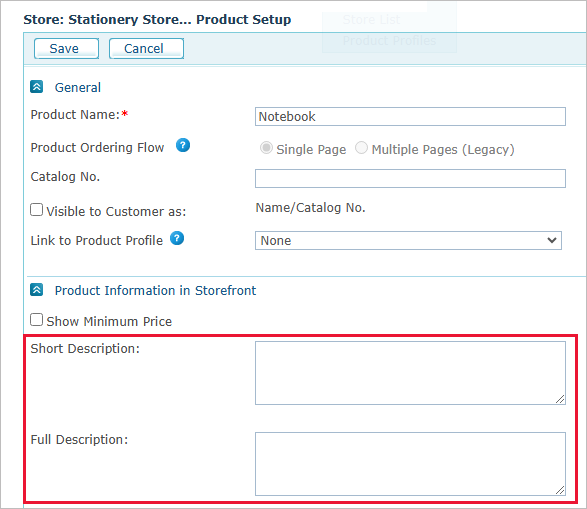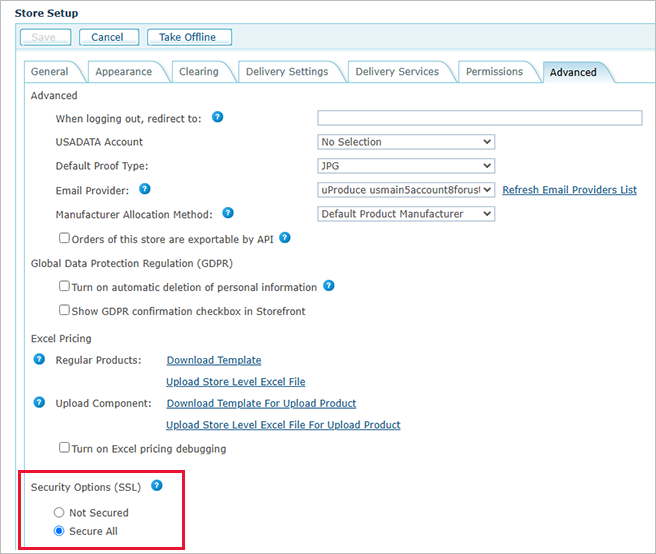Search Engine Optimization (SEO) in uStore NG Stores
Search Engine Optimization (SEO) enables you to improve the volume and quality of traffic to your website from search engines. This article provides the required settings and guidelines for improving SEO in uStore's NG stores.
Note: This article lists only the functionality supported by XMPie. It does not cover every SEO option that XMPie does not support, including but not limited to meta tags.
Keyword research
-
Identify target keywords: Use tools like Google Keyword Planner to find keywords relevant to your niche.
-
Use long-tail keywords: A long-tail keyword is a highly specific search phrase with three or more words. These keywords have less competition, making them easier to rank for, and they help optimize your website for different types of searchers. Because they target users with clear intent, long-tail keywords are valuable for SEO and can lead to higher conversion rates.
For example:
Short-tail keyword: laptop
Long-tail keyword: best laptop for video editing under $2000
In uStore, add these keywords to the product’s Short Description and Full Description fields.

On-page SEO optimization
-
Headings: Use headings (H1, H2, H3) in your store’s HTML pages.
Use proper heading hierarchy and include keywords in your headings.
Note that this option is supported in custom themes only. For detailed information, see Theme Development Overview.
-
Meaningful URLs: Include the relevant keywords in the product name. This will define the URL of the product.
-
Image optimization: Use descriptive image file names, insert keywords into the alt text, and compress images for faster loading.
For more control over image optimization, use custom theme development. For detailed information, see Theme Development Overview.
-
Content quality: Create valuable, original content that answers user queries and incorporates keywords naturally.
In uStore, add these keywords to the product’s Short Description and Full Description fields.
Technical SEO
-
Mobile-friendliness: uStore supports mobile friendly stores. There is no need to take any action on your side.
-
Site speed: uStore optimizes the site's speed by:
-
Minimizing JavaScript and CSS
-
Using a Content Delivery Network (CDN)
-
Implementing lazy loading
-
Caching
Make sure your images are optimized in size for optimal site speed.
-
-
Robots.txt: uStore provides the robots.txt file as part of its solution. This allows search engines to crawl your store and save its information.
-
SSL (Secure Sockets Layer) certificate: Use HTTPS to secure your site. Google considers HTTPS as a ranking signal. This means websites with HTTPS might rank higher in search results compared to those without it, as Google prioritizes sites that are secure for users.
In uStore, secure the store using SSL. For more information, see Setting Security Options (SSL).

Content strategy
-
Regular updates: Keep your content fresh and up-to-date.
-
Blogging: Create a blog with informative, keyword-optimized posts to attract traffic.
-
Multimedia content: Use videos, infographics, and images to engage users and reduce bounce rates.
-
User intent: Write content that matches what users are looking for, whether it’s informational, navigational, or transactional.
Off-page SEO
-
Backlink building: Get high-quality backlinks from reputable sites to improve your authority. Search engines like Google use backlinks to assess a website’s credibility and authority. More high-quality backlinks can improve your ranking in search results.
-
Social media sharing: Promote your content on social media to drive traffic and indirectly boost SEO.
-
Guest blogging: Write for other reputable sites in your niche to build backlinks and authority.
Local SEO
-
Google Business Profile: Set up and optimize your Google Business profile. It is a free tool from Google that allows businesses to manage their online presence across Google Search and Google Maps.
-
NAP consistency: Ensure your name, address, and phone number are consistent across all online platforms.
-
Local keywords: Use location-specific keywords in your content.
Analytics & monitoring
-
Google Analytics: Track website traffic, user behavior, and conversion rates. For more information, see Implementing Google Analytics in your Store.
-
Google Search Console: Monitor search performance, index status, and fix crawl errors.
User experience
-
Easy navigation: Make sure the site is easy to navigate with a clear structure.
-
Engaging design: Use a clean, professional design that keeps users engaged.
-
Low bounce rate: Improve content relevance and site speed to reduce bounce rates.
Created by: Rafael Moreno on February, 2025
